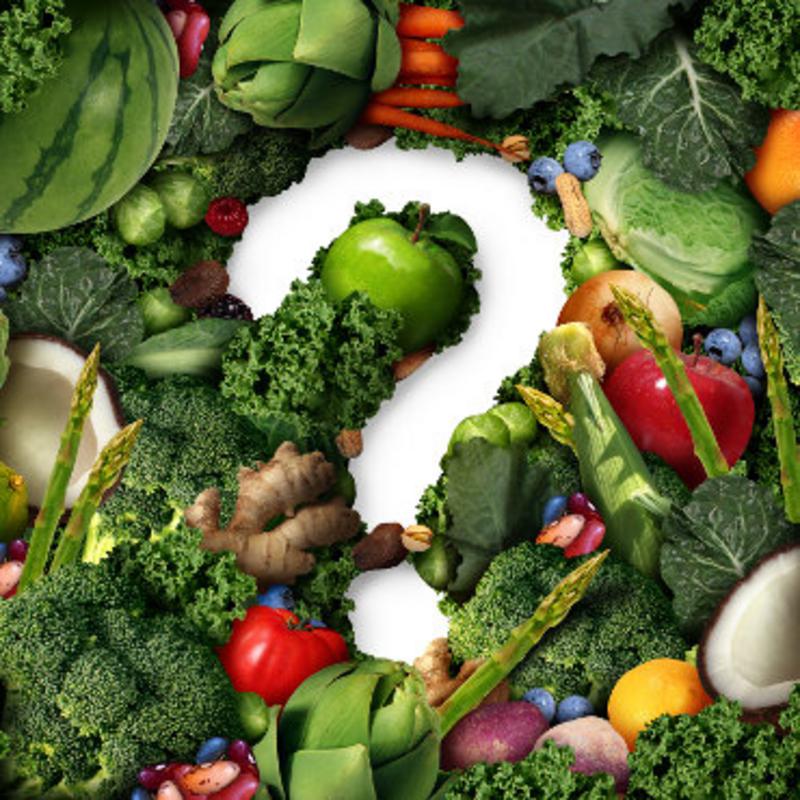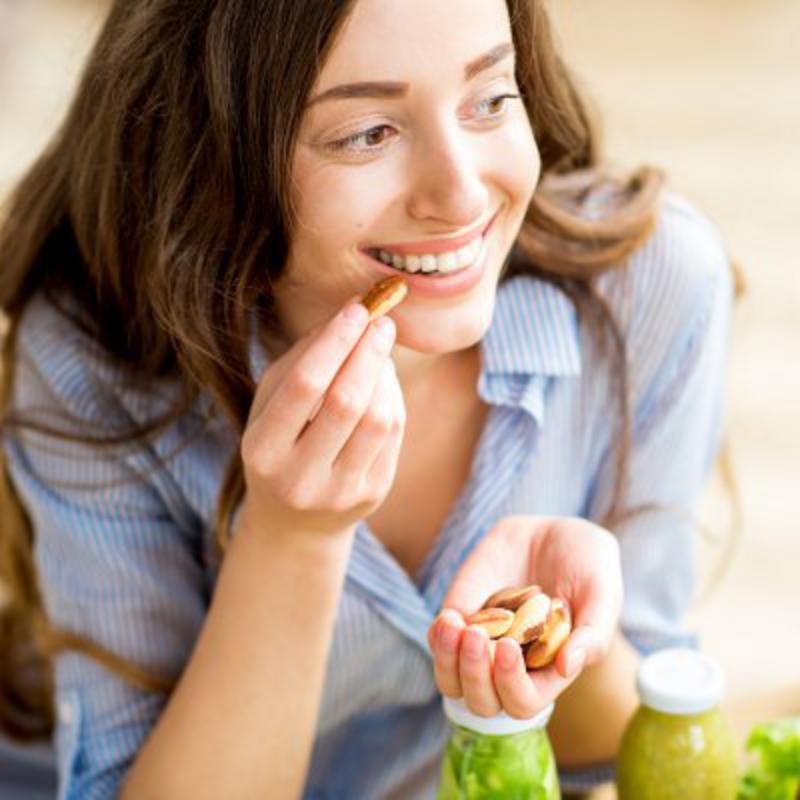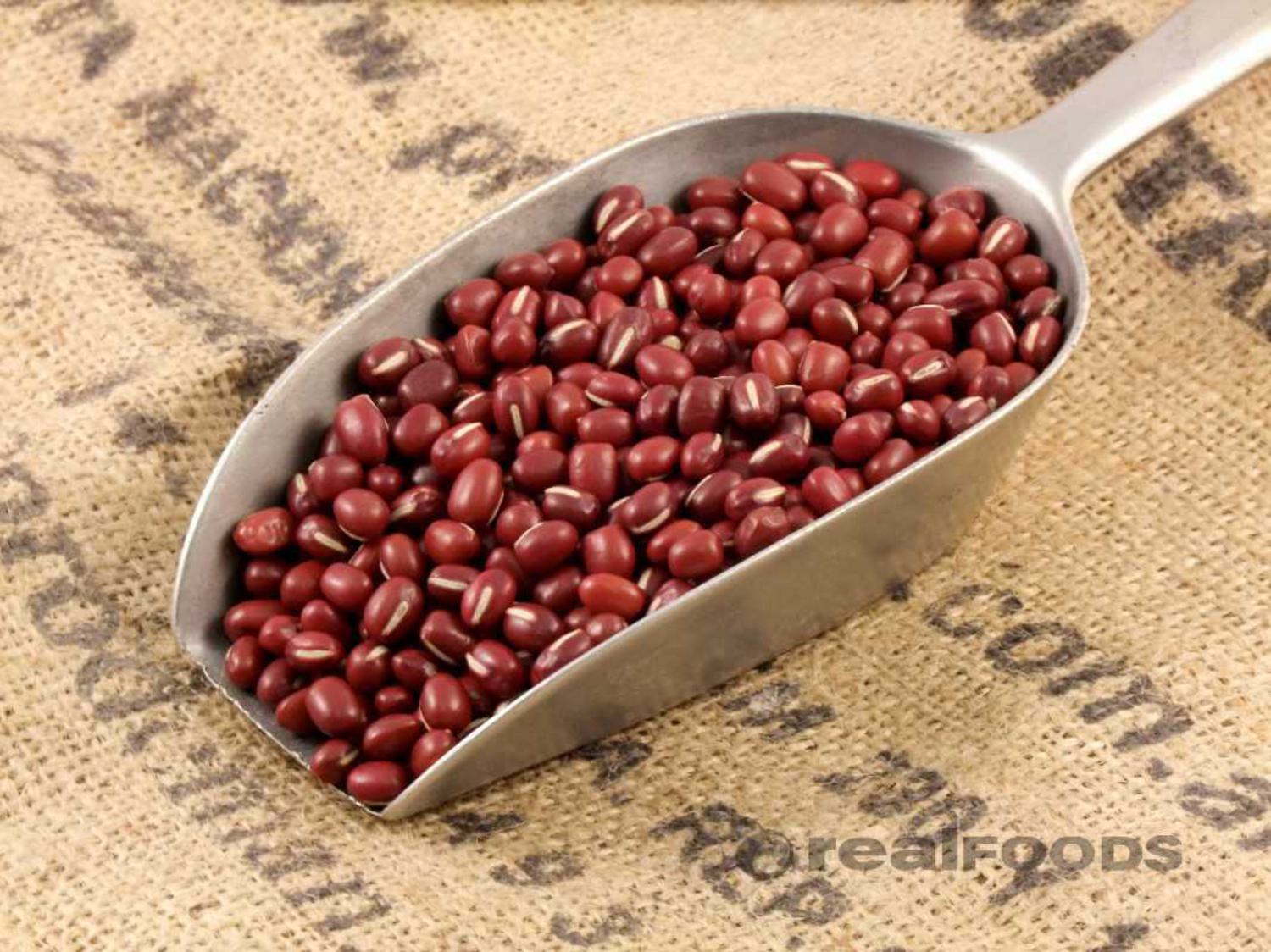How to get protein while on a plant-based diet
If you google ‘where do vegans (or vegetarians) get their protein?’ you will find numerous entries that recollect a common situation for non-meat eaters: having to explain to a flabbergasted, or indeed perhaps just a sceptical, acquaintance exactly how non-meat eaters can take in enough protein.

Leaving aside the discussion on why someone would make the decision to adopt a plant-based diet, non-meat protein is actually quite easy to obtain, especially now with the ease of internet shopping. However, the sheer volume of information, varying opinions, and celebrity-endorsed diet programmes can often be confusing, making the transition all the more daunting and off-putting. So, we have put together this Protein Primer, to hopefully make the information a bit more clear for anyone who might be considering excluding meat from their diet; and to provide a few interesting suggestions for those seasoned veggies who might be looking to spice things up in the kitchen every now and again.
What is protein and why do we need it?
Protein is an important building block for both plants and animals. Indeed, protein is both “the principal material of which animals are made” and on a more minute level, “all the enzymes that control chemical reactions in organisms are proteins.” (The Oxford Companion to Food: 653) So, an understanding of the two complementary forms of protein is key to a complete and well-balanced diet.

For our purposes here however, I will abandon the bio-chemistry lecture on how exactly amino acids work and join together within our bodies and simply stick to looking at the more everyday role that protein plays in our daily lives, the first definition above: protein is necessary to build muscle, for optimising weight loss, and for good general health.
Further reading in the Oxford Companion to Food reiterates what we all grew up being told at the dinner table: animals (including humans) require protein in order to grow and repair their bodies - so one should have a diet that ticks as many nutritional boxes as possible including sufficient protein intake. Luckily, the human body is capable of creating a few amino acids on its own. These are called ‘non-essential’ amino acids and consist of components such as alanine and aspartic acid. However, the reason that there is such a discussion about protein intake is due to those amino acids that our bodies do not manufacture on their own, so we must take in these building blocks of protein on a daily basis in order to make up this deficit. If a protein (aka an amino acid) must be sourced from food, we call it an ‘essential’ amino acid and some examples of these include the sleep inducing protein called tryptophan, lysine, and valine.
All of these proteins, both the essential and non-essential amino acids, are combined inside of our bodies in order to create the specific protein that is needed to rebuild or repair broken or tired muscles. This rebuilding predominantly takes place during sleep, so while diet and exercise are key components to good health, rest and recuperation is equally important - so go ahead and take that Saturday afternoon nap in between the football!
Protein: how much do we need, really?
Depending upon your health goals, your diet and exercise regime can be very different from someone else’s. It makes sense that a body builder would need shed loads more protein that an office worker who just wants to stay fit - however, just how much would each need?
(This is probably a good point to pause and quickly remind the reader that this article is not intended to provide medical advice and you should consult your doctor and a fitness specialist before embarking on any fitness programme.)
The question of exactly how much protein that you should consume daily largely depends upon: 1) your fitness or lifestyle goals; and 2) your gender, age, and weight.
The American recommendation, for the average person, is to consume 0.8g of protein/kg of body weight (0.36g/lb) daily. For endurance athletes, however, the recommendation is 1.2-1.4g/kg (0.54-0.63g/lb) of bodyweight; and for strength trainers, 1.4-1.8g/kg (0.63-0.81g/lb) is recommended.
These numbers are also standard in the UK, as you can see in this Men’s Health UK article here.
So, for fun, let’s use me as a real-world example of how these numbers work out:
I am a 29 year-old male, approximately 85kg (that’s ~170lbs or 13ish stone). I’m an amateur footballer so I run 4-5 times and do light strength training twice a week. Because running about on the pitch does not necessarily require huge muscles, I aim to take in a bit more than 80-90g of protein each day.
So, if we use the ratios from above, to remain at a healthy minimum level I would need 0.8g/kg of my body weight. That works out as: 0.8(min. protein requirement in grams) x 85 (my bodyweight in kg) = 68g of protein each day, minimum.
Now, to allow for my physical exertion on the football pitch, let’s consider the numbers for an ‘endurance’ athlete. That would work out to: 1.2g (min. protein requirement) x 85 (my body weight in kg) = 102g of protein intake daily.
While these ratios are valid for both males and females, what will be different for each gender is the percentage of protein required for your overall diet. These dietary percentages can be found here for succinct referencing.
How to get protein without the meat
So, at this point, we know the basics of what ‘protein’ is, what it does, and how much you should aim to consume based upon your level of activity. All that remains is to consider exactly how to get these countless grams of protein each day without breaking the bank. When planning my shopping and my meals, I tend to split protein into two main categories: supplements and foods.
Supplements are probably the easiest to cover quickly, as we are all familiar with the stereotype of ‘the protein shake’. Protein shakes are a great way to get a big boost of protein in one sitting-especially when mixed with a nut milk or an alkalising barleygrass or wheatgrass powder. I am a daily user of protein bars as well. Typically, protein bars are great for use in bulking out a meal that might otherwise be light on its protein content. They are also super useful when on the go. RealFoods has a great selection of protein bars , protein powder, and protein balls; and we are always looking for new, interesting additions to the line. Have a look at this article on juicing and smoothies for our guide and nifty infographic on adding protein to smoothies.
Unfortunately, the world of protein supplements is vast and can be a bit daunting if you are just making the switch, so in addition to a conversation with your health professional we encourage people to do the research, find the commonalities in what the pros are saying, and you should be just fine. Ten minutes on Google looking up reviews for two different types of protein powder will be well worth the effort. Just be mindful that everyone’s body is different and you should still enjoy what you eat - it’s not just about the ratio of carbs to protein to fat
This leads me nicely onto a discussion on food options when planning your meals. Protein supplements aside, the easiest and perhaps most effective way of taking in your daily protein requirement is simply through the foods that you are already eating. I have found that it is easiest to simply incorporate 10-15g (though no more than 30g per sitting) of protein into each meal that I eat throughout the day, ending with a larger than usual portion of protein with dinner if needed.
I personally belong to the school of thought that my meals do not need to be planned out down to the last calorie - as long as each meal is consumed at approximately the correct time and each meal has a good balance or objective. What I mean by this is simply: the standard rules of healthful eating and living still apply to non-meat eaters. You should generally not eat your last meal later than 8pm, you should favour several small meals throughout the day rather than two or three large meals, alcohol and sugars should be minimised while water should constantly be by your side, and each meal should be forward-looking in order to prepare your body for the next task.
Some examples of foods that should be on anyone’s shopping list include:
1) Legumes- alfalfa sprouts, peas (snap, snow, split), beans (adzuki, black-eyed, broad), carob, soybeans, peanuts, and lentils. Pulses are a great source of protein - have a look at our Real Foods guide to pulses for all their cooking times and types.
2) Fruit and Vegetables- this should be obvious but the emphasis here is on having as wide a range of Fruit & Veg as possible. Countless stories of anaemia, B12 deficiency, and iron deficiency, can be found online, many of which are due to having too narrow a diet.
3) Carbs- Rice and other grains along with pasta are a must. Kamut is high in protein (see this article for further information on Kamut grain), or try amaranth or quinoa grains.
4) Healthy sugars- Because everyone deserves some chocolate each day! Try to stick with dark chocolate that is 60%+ cacao.
5) Nuts and their butters- Crunchy Peanut Butter is my favourite, as well as this jam.
6) Plan-based milks and drinks- Put your favourite(s) from this list

Resources
This article by No Meat Athlete is where I found the basics regarding how much protein one should be consuming daily, for both athletes and non-athletes, along with some standard suggestions on what foods are best for optimising your protein intake.
For protein powder ideas, check out: http://www.onegreenplanet.org/vegan-health/7-must-try-vegan-protein-powders/
If you are new to the vegetarian diet, check out this other No Meat Athlete article: http://www.nomeatathlete.com/50-vegetarian-resources/
Here is a load of information for new and old vegetarians from the Vegetarian Resource Group: https://www.vrg.org/nutshell/athletes.htm
Here is an excellent reference for female athletes who are looking for some ideas on how to create or spice up their meal plans.